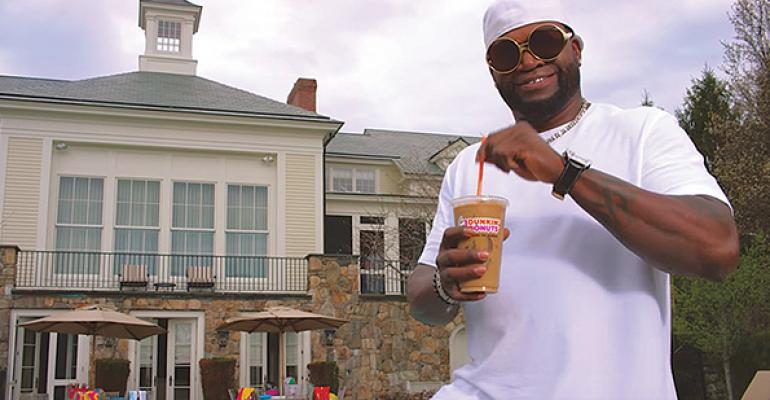Restaurants have quickly embraced social media as a way to connect with customers, but have more slowly devised ways to measure those efforts.
Digital programs, especially those aimed at boosting brands and engaging with customers, have blossomed on social media platforms like Facebook, Instagram, Snapchat, Tumblr, Twitter, Yelp and YouTube.
“The way we reach our consumers is evolving rapidly,” said Scott Hudler, chief digital officer of Canton, Mass.-based Dunkin’ Brands Group Inc., parent to 11,000-unit Dunkin’ Donuts. “We are able — big brands and small brands — to reach consumers in new and different ways.”
Trouble with measurement
Now companies are looking at ways to measure the return on investment of those expanding efforts.
“There are actually some pretty effective ways of measuring the ROI of social. The only caveat is that you have measured ROI elsewhere first,” said David Rehimi, corporate account executive for tourism and hospitality at social-media management company Hootsuite.
“You need to have an effective enough e-commerce strategy where you are able to pinpoint a value for web traffic,” he said.
Rehimi said companies could look at how many online orders were received through social channels and those average checks, and how many website views were produced.
Working backward, a company can use tools to produce a dollar value for social media traffic that flows, for example, from a web-based order, he said.
“At the end of the day, you can actually pull up a report that will tell you how much you ‘made’ the company that day via your social efforts,” Rehimi said.
New technologies
Such reports rely on compiling data quickly and efficiently, and the restaurant industry is increasingly absorbing new technologies.
“Technology is changing what’s happening inside companies, as well as how we are marketing to our customers,” said Cynthia Hofmann, vice president of communications and digital marketing at Vancouver, Wash.-based Papa Murphy’s Holdings Inc.

Websites remain a pillar of digital marketing programs, Hofmann said.
The 1,500-unit take-and- bake concept debuted a new photo- and video-heavy website in February that aims to capture online orders. The heavily franchised concept first tested online ordering in two markets in 2008, and has slowly adapted.
While measuring many aspects of social media remains a challenge, restaurant brands know they have to be in the arena, practicing it as much as an art as a science. The consumer is literally a moving target, especially in the age of growing smartphone use, which is often coupled with social media use.
Mobile first
“Mobile should be the absolute center of everything you are doing,” Hudler of Dunkin’ Brands said at the February International Franchise Association’s digital marketing and technology summit in San Antonio.
“Mobile should be first and best. It’s where we put our resources, what we focus on.”
Television advertising, while still important, is slipping in priority, he said.
“You’ve got to be where your consumers are, not where it’s easiest to get to them,” Hudler said.
Mobile phones, he added, “have become the remote control of our lives,” providing information and communications, as well as work and personal schedules.
With customers using their phones to decide where to go, mobile is especially critical to restaurants, Hudler said.
Social media and app traffic can also be used to deepen loyalty and increase frequency if employed well, Hudler said.
For example, Dunkin’ introduced its app in August 2012, and now has 16 million users.
“We’ve built this as the platform for coupons,” Hudler said. “We put our best offers into the mobile app.”
When people access the website or use the app, they are looking for coupons, store locations and menu information, he said. Dunkin’ looks to drive loyalty through those offers and increase frequency of use.
“It’s got to drive sales, and it has to improve the customer experience,” Hudler said.
Offers can be targeted geographically, and Dunkin’ Brands plans later this year to offer mobile ordering that will allow customers to jump the line. Mobile ordering also speeds throughput and improves order accuracy, he said. Plus, users can toggle from English to Spanish.
Employees as brand ambassadors
With social media a native aspect of younger workers’ lives, many restaurant brands are making sure their employees serve as ambassadors for the brands, Rehimi said.
“I have to say that [employee] advocacy, above all others, is the biggest and most lucrative trend we see today,” Rehimi said.
“This is the idea of enabling your biggest supporters — your employees — to spread your sphere of influence by giving them easy access to sharing out corporate social content.”
Hootsuite, for example, has created an app called Amplify that companies can provide employees to make it easy for them to share corporate content through the workers’ own social channels.
Such efforts turn restaurant brands into content creators.
Hudler of Dunkin’ Brands said Dunkin’ Donuts’ YouTube campaign last summer was such a viral example.
Dunkin’ paired New England Patriots tight end Rob Gronkowski and Boston Red Sox designated hitter David “Big Papi” Ortiz for songs, including the upbeat “Sippin’,” that appeared only on YouTube to promote Dunkin’s Summer Chill.
The program resided exclusively in social channels and has earned about 1.4 million views, with media spending limited to content creation, Hudler said.
And because Snapchat is so popular among Millennials, the company has offered branded filters, such as on Valentine’s Day, that are only available in geo-located offers in units.
With an eye to the digital future, Dunkin’ Brands sets aside part of its marketing budget for “absolute experimentation — things that we know that may not or may work,” Hudler said.
“There are rapid changes going on in the marketplace,” Hudler said. “Embrace it and get your arms around it. Understand it.”
Updated: May 4, 2016 Scott Hudler has been promoted to chief digital officer of Dunkin' Brands Group Inc.
Contact Ron Ruggless at [email protected]
Follow him on Twitter: @RonRuggless
​





